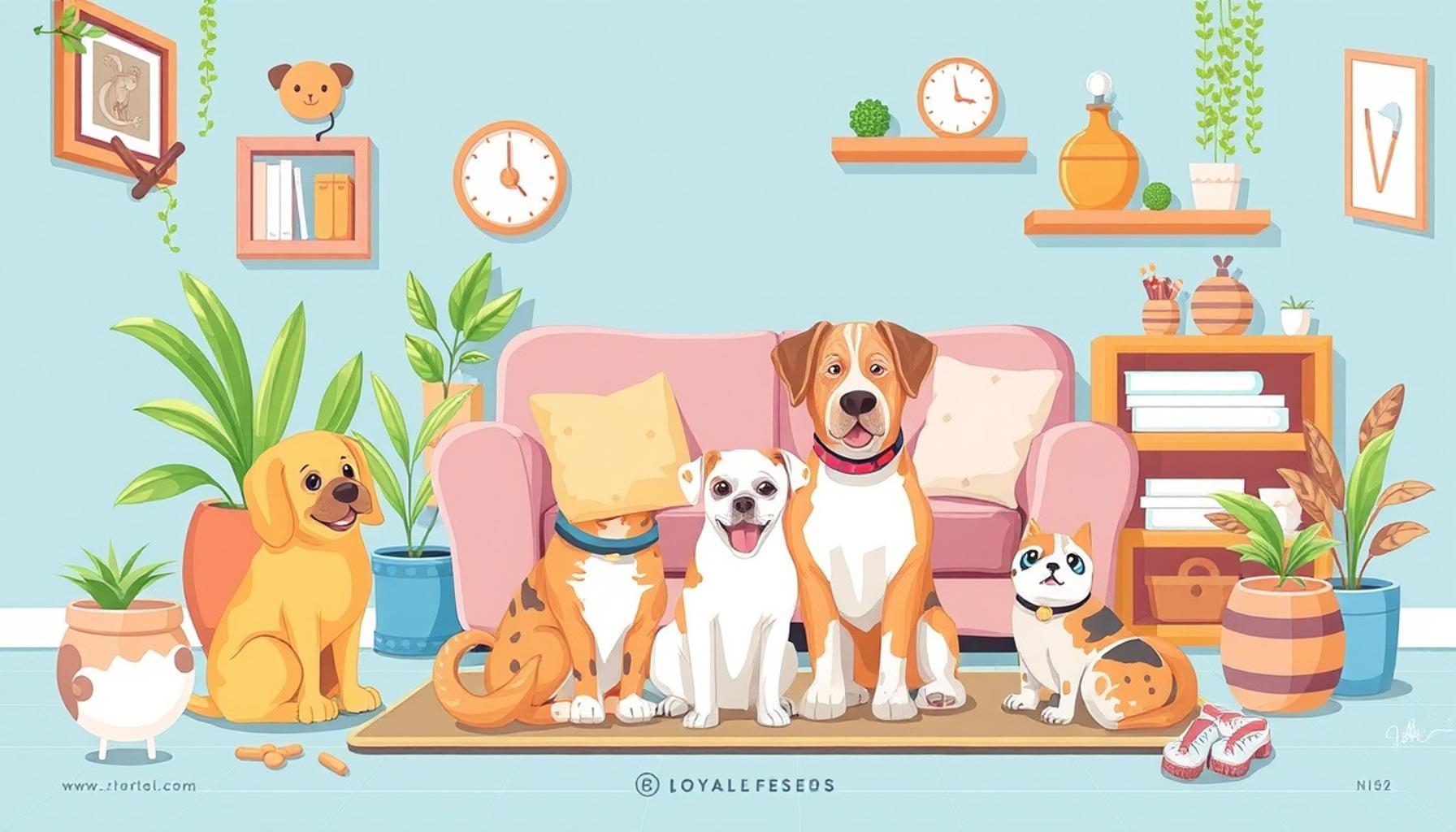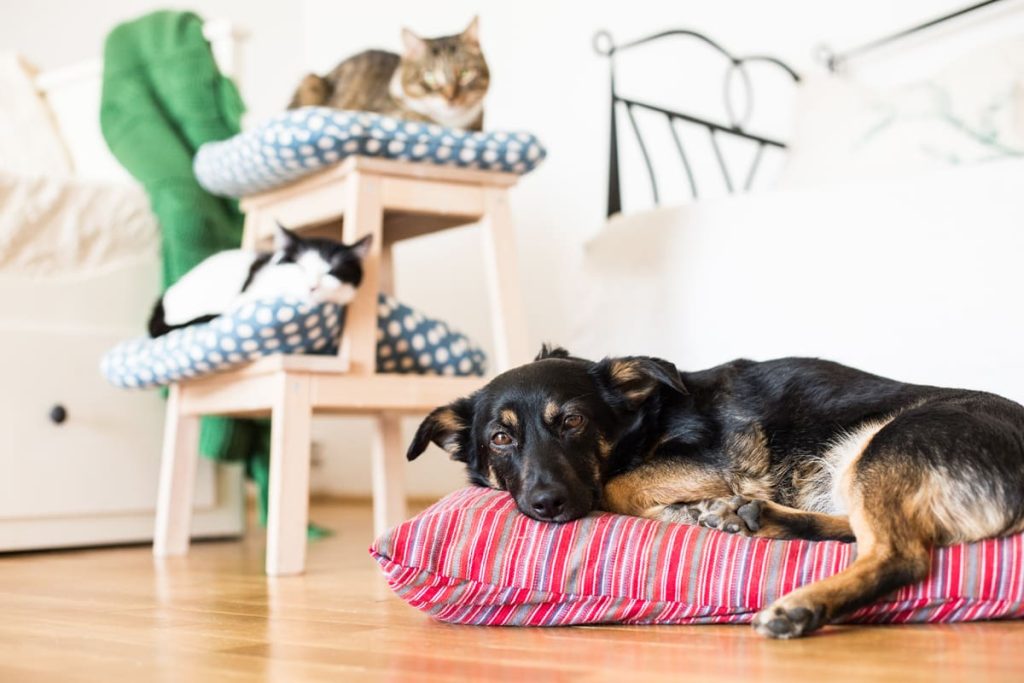Tips for Creating a Safe and Comfortable Pet-Friendly Home Environment

Creating a home that is both safe and comfortable for pets is crucial for any pet owner. With pets often viewed as family members, the significance of a pet-friendly environment cannot be overstated. This not only enhances their quality of life but also ensures a harmonious living space for everyone.
As pets explore their surroundings, it’s essential to consider various factors that contribute to their well-being. From eliminating hazards to providing cozy spots to relax, small changes can make a big difference. To help you get started, we’ve compiled a Top 5 list of practical tips that will transform your home into a welcoming haven for your furry friends.
- Understand the basic safety requirements for your pets.
- Recognize the importance of comfort and proper settings.
- Identify common household items that may pose risks.
- Explore creative solutions for enhancing your home environment.
- Learn about products specifically designed for pet comfort.
Join us as we dive deeper into these essential adjustments, ensuring a nurturing space for your beloved companions.
ADDITIONAL INSIGHTS: Expand your understanding here
Tips for Creating a Safe and Comfortable Environment for Pets at Home
Our pets hold a special place in our hearts, and as responsible pet owners, it’s our duty to create an environment where they can thrive. Ensuring a safe and comfortable home for your pets is not only essential for their health and happiness but also enriches the pet-owner relationship. Here, we delve into five crucial tips you can adopt today to design the perfect haven for your furry friends, ranging from basic to more advanced considerations.

5. Provide Cozy Spaces
Pets, much like humans, need their own space to relax and recharge. The importance of a designated pet nook cannot be overstated. These snug retreats, be it a comfortable dog bed or a cat tree, offer a secure haven where pets can feel truly at home. Imagine returning home after a long day; similarly, your pet appreciates a place of their own for uninterrupted rest.
When designing these spaces, consider areas that are away from high-traffic zones like living rooms or near noisy appliances such as washing machines. This approach not only minimizes stress but also provides them with a sense of safety. Think of quiet corners equipped with plush blankets, which can be especially soothing for older pets or those with anxiety. Offering this sanctuary is a significant stride towards enhancing your pet’s well-being.
4. Secure Hazardous Areas
Curiosity often leads pets, especially young ones, to potentially dangerous situations. To mitigate these risks, securing your home is essential. Investing in baby gates can effectively restrict access to stairways or specific rooms, reducing the risk of accidental falls. For households with energetic pets, imagine the peace of mind in knowing that slip-ups on staircases are minimized.
Moreover, the kitchen and bathrooms often house cleaning supplies and chemicals. Storing these items in locked cabinets ensures they remain out of reach. Likewise, electrical cord protectors are a must to prevent pets from chewing on cords, which carries the risk of electrocution. These simple yet effective measures can significantly reduce household dangers, creating a much safer living environment for your pets.
3. Designate Pet-Friendly Zones
Designating specific pet-friendly areas in your home can help safeguard both your pets and possessions. Not only does this instill a sense of routine for your pets, but it also delineates boundaries that help maintain order. Choose strategic locations, such as sections of the living room or kitchen, where you can monitor their activities.
Opt for durable and easy-to-clean flooring materials like tile or vinyl in these areas. Unlike carpets, these surfaces are more resistant to spills and accidents, simplifying cleanup tasks. To further encourage positive behavior, keep their toys, water bowls, and bedding in these zones. This not only reinforces the areas as their space but also integrates their presence into the home, creating a harmonious balance.
2. Monitor Temperature and Ventilation
Temperature regulation is vital in maintaining a comfortable environment for pets, as they are sensitive to both extreme heat and cold. During summer months, ensuring adequate ventilation becomes crucial. Utilizing air conditioners or fans helps maintain a stable indoor climate, protecting pets from heatstroke.
In colder months, offering warm bedding and shelter is necessary to avoid hypothermia. Consider the specific needs of your pet’s breed and age, as these factors influence how they handle temperature fluctuations. While breeds such as Huskies thrive in cooler climates, Bulldogs are more susceptible to heat. Checking indoor temperatures regularly is a simple yet effective practice to ensure your pets’ comfort year-round.
1. Pet-Proof Your Home
The cornerstone of creating a pet-friendly home lies in thorough pet-proofing. Start by surveying your home to identify potential hazards such as choking risks, toxic plants, or chemicals. Taking preventive measures, like removing poisonous plants or storing small items out of reach, is key to preventing accidents.
Additionally, ensure all furniture is stable and secure. Pets, in their playful nature, often jump on or explore surrounding structures, risking accidental toppling. Anchoring bookshelves and securing heavy objects can prevent injuries. By investing time in pet-proofing, not only do you enhance safety, but you also avoid potential veterinary costs associated with injuries.
In summary, creating a safe and comfortable home for your pets involves a thoughtful balance of providing nurturing spaces and implementing precautionary measures. By following these detailed steps, you’ll be enhancing both your pets’ quality of life and your peace of mind. Ultimately, a secure and enriching environment is an integral aspect of responsible pet ownership, ensuring your beloved companions thrive in a loving home.
| Category | Description |
|---|---|
| Safe Spaces | Creating designated areas for pets to relax can greatly enhance their comfort. These spaces should be away from high-traffic areas and filled with familiar items such as toys and blankets that provide a sense of security. |
| Home Environment | A smooth furniture configuration helps prevent accidents. Ensuring that furniture is stable and devoid of sharp edges creates a harmonious home where pets feel confident exploring. |
| Toxic Plants | It’s crucial to identify and remove toxic plants from your home. Species such as lilies, azaleas, and philodendrons can pose serious health risks to pets. Opt for pet-friendly plants instead, such as spider plants or Boston ferns. |
| Pet-proofing | Consider using pet gates to restrict access to areas with hazards, such as stairs or kitchens. Additionally, storing household chemicals out of reach is essential in preventing accidental ingestion or exposure that can harm your pets. |
YOU MAY ALSO LIKE: Read this other article
Frequently Asked Questions about Creating a Safe and Comfortable Environment for Pets at Home
What are the essential elements to consider when pet-proofing a home?
Create a safer environment by prioritizing factors like secure fencing, safe spaces without harmful chemicals, and non-toxic indoor plants. Remove sharp objects and small items that could pose choking hazards. Additionally, ensure that electrical cords are either hidden or secured out of reach. Pet-proofing is crucial to prevent unpleasant accidents and to offer a comfortable space for your beloved companions.
How can I make my pet feel comfortable and reduce their stress at home?
Designate a specific area for your pet with their favorite toys, a cozy bed, and water access. Routine is key; maintaining a consistent feeding and walking schedule can greatly reduce anxiety in pets. Consider incorporating calming background music and pheromone diffusers to further ease their stress. Enhancing their environment with routine and familiar objects is vital for comfort.
What type of flooring is recommended for homes with pets?
Choosing pet-friendly flooring is essential to support durability and comfort. Vinyl or ceramic tiles are excellent choices as they are scratch-resistant and easy to clean. Hardwood floors can be prone to scratches, so opt for finishes that minimize damage. Carpets might hold odors and stains, so prefer rugs that are washable and can be easily replaced. Select flooring that balances durability with comfort to suit your pet’s needs.
Are there particular plants that should be avoided in a pet-friendly home?
Absolutely. Certain plants are toxic to pets and can lead to severe health issues if ingested. Avoid species like lilies, aloe vera, azaleas, and sago palms. Instead, opt for pet-safe plants such as spider plants, Boston ferns, or bamboo palms. Always research plant safety to protect your pets from accidental poisoning.
How can I ensure my pet remains stimulated indoors?
Engagement is crucial for your pet’s mental health. Rotate different toys to maintain their interest and incorporate puzzle feeders to challenge them during meal times. Schedule frequent play sessions and training exercises to keep them active. Stimulating your pet mentally ensures their happiness and prevents destructive behaviors.
YOU MAY ALSO LIKE: Read this other article
Conclusion
Creating a safe and comfortable environment for pets in the home is not merely about convenience but is essential for their well-being and happiness. As highlighted in this article, attention to detail and understanding specific pet needs can significantly enhance their quality of life. The top tips discussed focus on ensuring physical safety, providing enough mental and physical stimulation, and creating spaces that cater to a pet’s natural instincts.
Key Takeaways
- Pet-proofing your home: It’s crucial to eliminate potential hazards like toxic plants or accessible small objects that could pose a choking risk.
- Catering to natural behaviors: This includes creating an environment that allows pets to express themselves naturally, such as scratching posts for cats or chew toys for dogs.
- Climate control: Ensure the home maintains an appropriate climate to avoid discomfort due to extreme temperatures.
- Personal spaces: Designate areas where pets can retreat, relax, and feel secure.
- Regular interaction: Pets thrive on interaction, both physical and mental; ensure routine playtime and social engagement.
Understanding the nuances of pet care and environmental control is crucial in a pet-friendly home. These practices not only improve pets’ lives but also foster a deeper connection between pets and their owners, enriching life for the entire household. By consistently seeking out methods and tips to refine your pet’s environment, you can ensure they grow and live happily. The journey of learning and adapting to your pet’s needs is ongoing and rewarding and should be embraced fully by pet owners.


